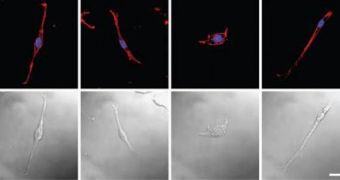Compounds inside scorpion venom have come under intense scientific scrutiny over the years, since it was discovered that certain combinations had the ability to stop the spread of brain-cancer tumors. By combining this knowledge with recent advancements in nanoparticle technologies, researchers at the University of Washington (UW) have created a substance that is able to fight the spread of tumors with a 98-percent efficiency, as opposed to the 45 percent registered when using venom alone.
The active ingredient inside the venom is a small peptide known as chlorotoxin, which has been in use for quite some time now. It acts by binding with certain proteins, known as MMP-2, that are over-expressed by tumors, and annihilates the cancer's ability to spread. When chlorotoxin and MMP-2 bind, they are both sucked in the cancerous cell and, deprived of it's external “agent,” the tumor cannot grow.
“People talk about the treatment being more effective with nanoparticles, but they don't know how much, maybe 5 percent or 10 percent. This was quite a surprise to us,” UW Professor of Materials Science and Engineering Miqin Zhang, who is also the lead author of a new study detailing the find, published in a recent edition of the scientific journal Small, explained.
In their studies on mouse models, the experts learned that treating tumors with the nanoparticle-plus-chlorotoxin complex resulted in the tumor becoming unable to change form as well. They do not know yet how this happens, but theories go that, by destroying the MMP-2 complex, the new treatment incapacitates the surface mechanisms on cancer cells that allow them to elongate their shapes and travel from the original infection sites to other parts of the body.
“We hypothesized the mechanism and we have all the data to prove our hypothesis,” Zhang added. The next step in the study will be to run more tests on unsuspecting mice and to eventually develop the most potent mix of the nature-technology complex.

 14 DAY TRIAL //
14 DAY TRIAL //